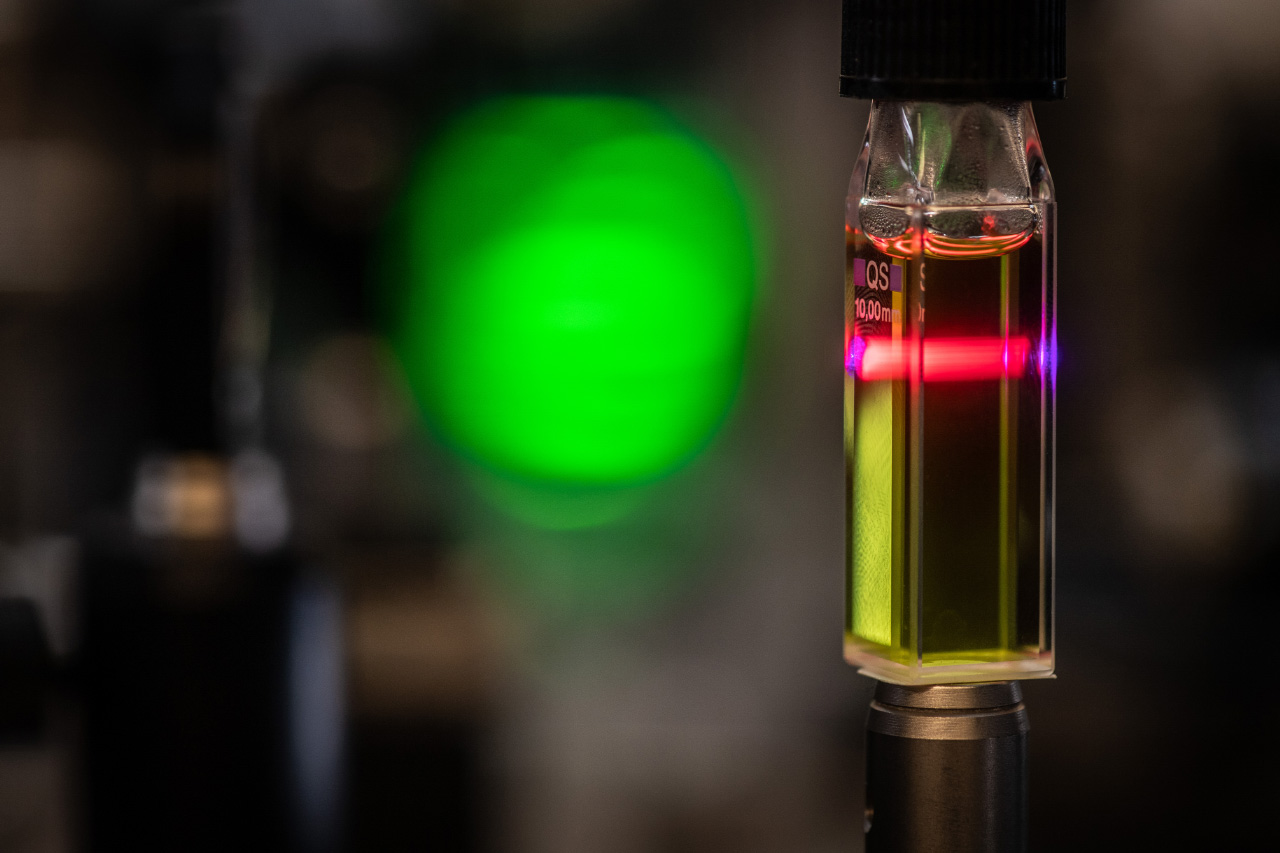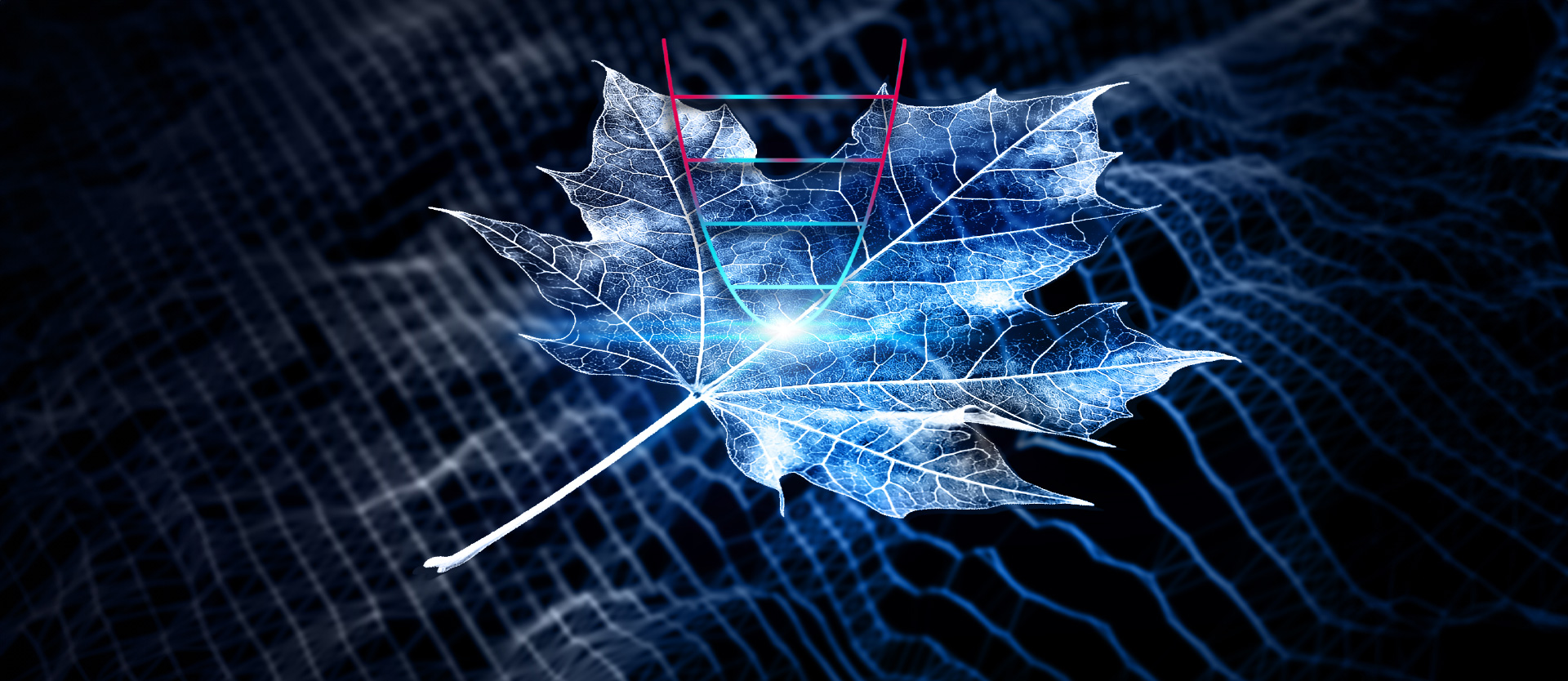Quantum Physics in Leaf Green

Photosynthesis is crucial for life on our planet. It’s how plants turn sunlight into chemical energy. Water and carbon dioxide are converted into sugars and oxygen – a process that seems simple but has huge importance. Photosynthesis is the foundation of our food chain and gives us the oxygen we need to breathe.
One of the key players in photosynthesis is chlorophyll, the green pigment in plants. It absorbs sunlight, which is why plants appear green – the red and blue parts of light are absorbed, while green light is reflected. The absorption of sunlight and the subsequent energy transfer within chlorophyll is the crucial first step in a complex chain of reactions that ultimately leads to the conversion of light energy into chemical energy.

Prof. Jürgen Hauer from the Technical University of Munich and his team are investigating how quantum mechanical effects influence the very first steps after light absorption in chlorophyll. Photo: Andreas Heddergott / TUM
It is precisely this very first step of photosynthesis that a research team from the Technical University of Munich, led by Jürgen Hauer, in collaboration with researchers from LMU Munich, the University of Innsbruck, and Queen Mary University of London, has now decoded. The results were published in the journal Chemical Science. “The energy transfer in photosynthesis happens in femtoseconds,” says Jürgen Hauer. That is incredibly fast: A femtosecond is to a minute as a minute is to the age of the universe. “We were able to discover a mechanism that makes these fast transfers possible,” explains Hauer.
Here’s the key discovery: classical physics can’t explain the ultrafast energy transfer. This is where quantum mechanics comes in – a branch of physics that deals with the behavior of tiny particles.
When chlorophyll absorbs sunlight, it is put into a higher energy state. The electrons inside it rearrange, and the molecule becomes “excited.” Previously, scientists thought that the absorbed energy moved sequentially through two different excited energy states in chlorophyll. However, in their experiments, the researchers observed that these two states are coupled and can transition into each other, making energy transfer faster and more efficient. “Effectively, they then form a new, combined state,” explains the study's lead author, Erika Keil. “These processes can only be satisfactorily described through quantum mechanics.”

In the experiment, the researchers were able to follow “live” how the light energy travels through the various states of the chlorophyll molecule. Photo: Andreas Heddergott / TUM
In their experiment, the researchers tracked how light energy moves through the different states of the chlorophyll molecule. The starting material was chlorophyll, which was isolated by Innsbruck colleague Simone Moser from frozen spinach purchased at a supermarket.
To study the chlorophyll, the Munich team used a technique called “transient absorption spectroscopy.” The molecule is excited with a short light pulse – but instead of natural sunlight using a precise, powerful laser. A second laser pulse then measures what happens in the molecule after the first pulse. This second pulse is directed at the chlorophyll shortly after the first one, allowing the researchers to track the further path of energy within the molecule.

The starting material was chlorophyll, which the Innsbruck colleague Simone Moser had isolated from frozen spinach from the supermarket. Photo: Andreas Heddergott / TUM
This method is commonly used in research. But to see the ultrafast process in chlorophyll, the team needed to create extremely short laser pulses, in the femtosecond range. It’s similar to photography: to capture something very fast, like a hummingbird's wingbeat, you need a very short exposure time. But the processes inside chlorophyll happen much faster – about 10 trillion times faster!
To verify the results from the experiments, theorists from LMU Munich and Queen Mary University of London simulated the process on a computer. “When we compared our measurement results with the simulations and they matched perfectly, we were very pleased,” recalls Erika Keil.
The team's discovery is only a small puzzle piece in the overall picture of photosynthesis. But Jürgen Hauer emphasizes: “It motivates me to know the early details. This is important, for example, if we want to replicate such systems.”
For several decades, there have been efforts to mimic photosynthesis technologically, to harness clean energy from sunlight. The results of the research team led by Jürgen Hauer
could help make that goal a reality.
In the future, the researchers hope to expand their study to better understand photosynthesis. Instead of only looking at isolated chlorophyll, they want to examine larger structures where photosynthesis takes place.
Original publication:
Keil E et al.
Reassessing the role and lifetime of Qx in the energy transfer dynamics of chlorophyll a
Chem. Sci., 2025,16, 1684-1695













